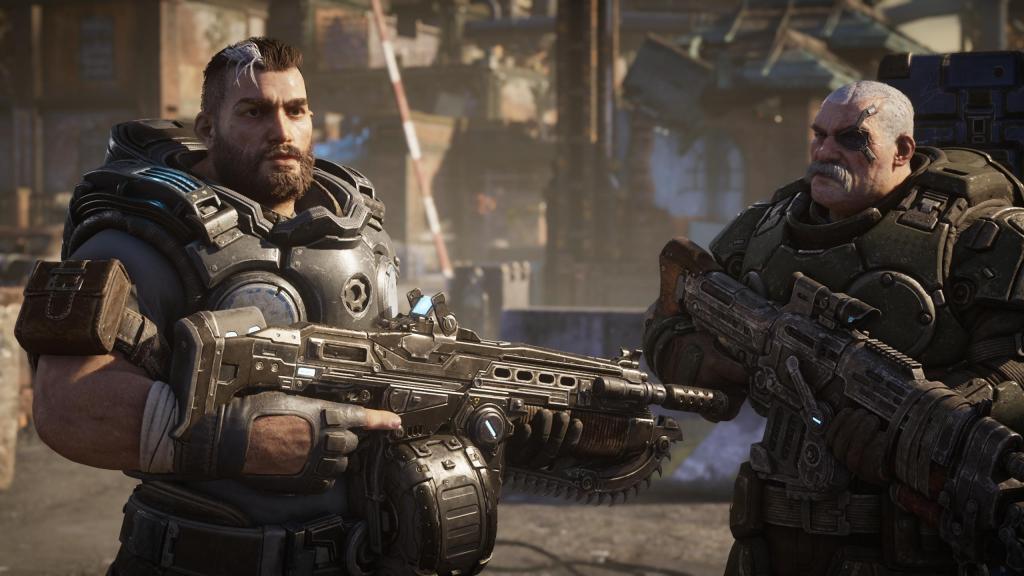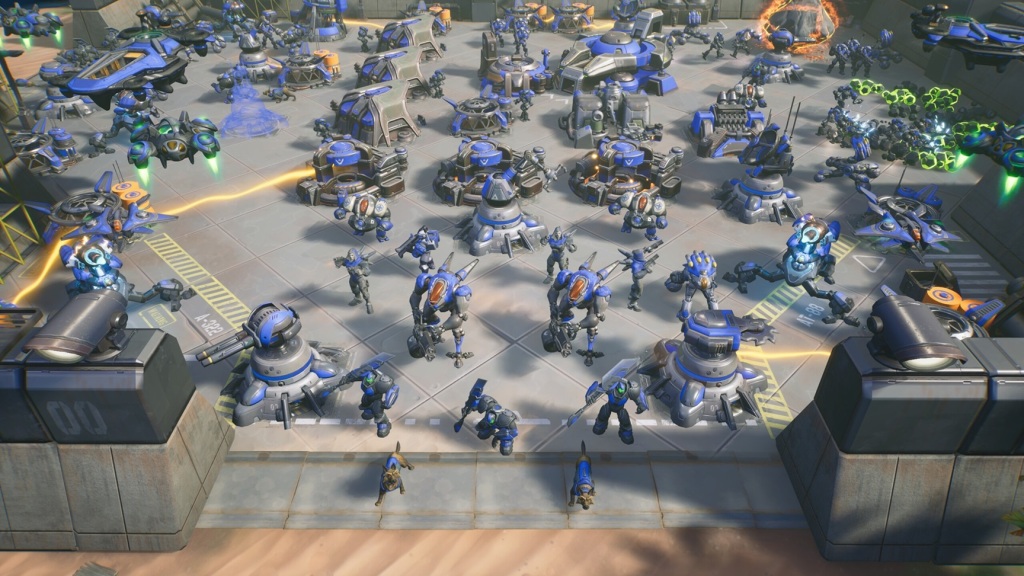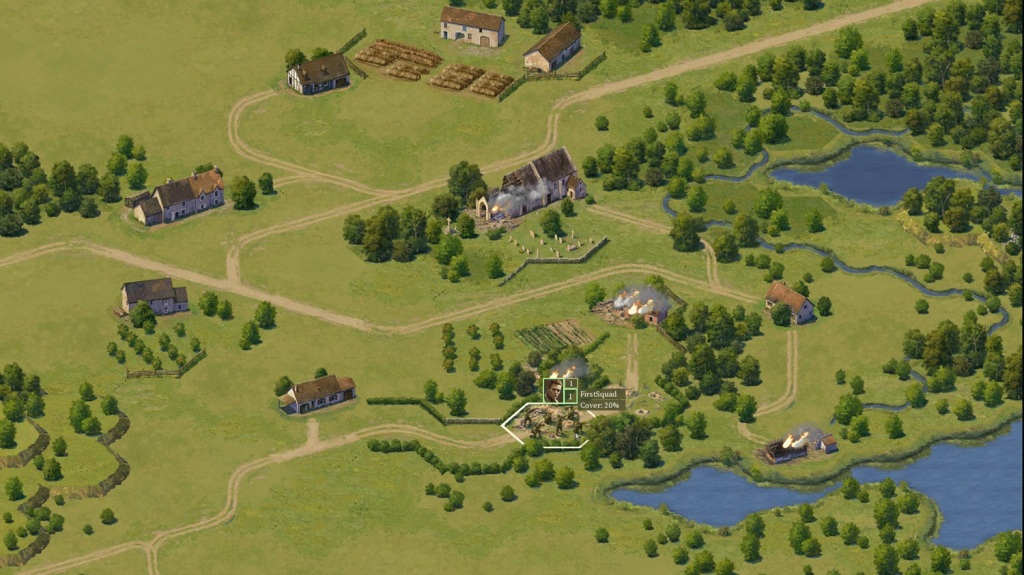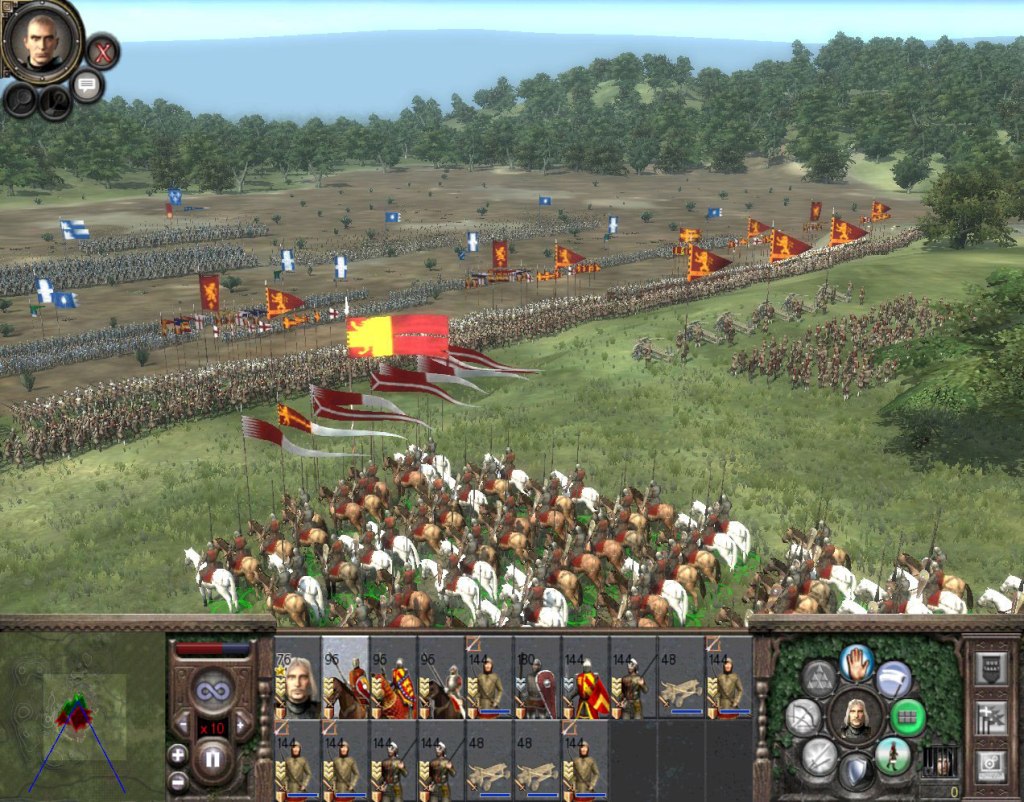Outside the wargaming and strategy sphere, the Gears of War franchise remains high amongst my favorites. Why? The original game came out all the way back in the early days of the Xbox 360 life cycle when yours truly was but a young, impressionable teenager. Big, burly, and extremely manly men protagonists? Hell yeah! Industrialized, grimy look? Hell yes, give me some of that. Testosterone-filled romp-slashing nasty but extremely large and menacing creatures in half using unpractical but stupid cool looking chainsaws strapped to the barrel of an assault rifle? Please, more!
For those living under the surface, Gears of War was a third-person cover-based shooter, so it came as an absolute surprise to me (and not only me, judging by the early reactions the game got) when Microsoft announced they would be slowing things down a bit and exchange the third-person perspective and the fast-paced shootouts for a more cerebral, 3D tactical experience. While it was quite understandable that traditional fans of the series were suspicious about this move. The game’s fast-paced action, and gung-ho attitude it was known for appealing to a very different audience from the average tactical strategy enjoyer. However (!), look behind the curtains of overt and intrepid manliness and it’s quite easy to understand why Microsoft saw on the cover-based gameplay of Gears a perfect setting to base their new adventure- Gears gameplay can be described easily as hunky people in cover shooting at each other until one or the other perishes.
What game also does that? Well, XCOM! Add a couple of grenades tosses, some skills and you have a pretty good base for a game, right? As it so happens to be, yes. Gears Tactics is actually a very solid experience. Sure, it has its faults and I’ll point them all out here, but it’s a very fun and commendable experience if you’re starting to get tired of waiting for XCOM 3. Also, if Mario and Rabbids was a surprise hit, why couldn’t the same thing happen with Gears? And it did, with Gears toping the Steam Sales Charts the day it came out and arguably, having a somewhat decent performance, even if sales numbers are unknown.
(The) Presentation: of Gears Tactics is absolutely top-notch and other than missteps here and there, this is where the game mostly shines through without any major issues. The environments are breathtaking, with the typical “industrialized 19th century but futuristic” look beautifully realized in all instances the game throws at the player. Dark and torn-down alleyways are as beautiful to gaze into as more colorful maps and more exotic locations. The game is filled to the brim with environmental details. Everything looks worn, dirty, and metallic except for small patches of nature sprouting from destroyed buildings and swaths of road. The character models are to reprimand but the lack of a full zoom-in function really takes away from all the hard work artists underwent to make it all come together. Gears of War has always been a bloody mess of gore galore and fortunately, Tactics doesn’t shy away from it.
Death melee animations for locust units look painful and disgusting: bayonets, chainsaws, shotgun smacks to the head, grenade chokeholds, and pistol-whipping are all here and it is disgusting joy to see it unfold in 4K. However, camera issues are still here two years after the game’s release. The lack of that total zoom-in is annoying enough but the fact that when your Gears shoot at an enemy and the cinematic camera doesn’t activate, what happens is that it will focus on the Gears shooting instead of the target getting shot, meaning that this stupid system both removes a bit of the satisfaction of seeing another locust go down in a shower of blood and guts but it also doesn’t allow for an immediate kill confirmation. It’s just very badly conceived and I doubt it couldn’t be fixed easily.
Cool New Mechanics: Despite some very big shortcomings I’ll mention later, Gears Tactics is quite successful in what it attempts to do and I have to praise the fact that it’s not afraid to stray from the 2011 XCOM formula that permeated most of these kinds of games in the last decade. Two big changes are immediately noticed: The lack of a grid movement system and the three action points instead of two, with the latter being an absolute game-changer, especially when paired with other game systems. The non-grid movement isn’t a necessary change, mainly because almost all of your movements will end up with units hugging the walls for cover. What this change gives you, is that finer degree of control, and on some rare occasions will allow for some movement optimization, saving a point here and there, especially when combined with the ability to redirect the unit’s path. Not one to applaud loudly the ridiculous amount of unnecessary complexity, but when systems like this are intuitive and work as they should- clean and simple- it just adds another layer of “things to keep track of” that makes everyone feel a bit smarter when managed to pull off that I very much enjoy.
The real change is in the three-point action system. See, for a long time, movement points were used for everything turn-based. To me, this always struck me as an annoying but necessary nuisance. For the sake of the argument, let’s say 100 Movement Points could be used as needed to perform several actions: moving one square will cost that unit 5 points. Crouch and it will subtract 3. Take a shot and 12 more will be gone from the pool. Get up and another 3 go missing. Move again 2 squares but one is swampland, now it costs you 5 plus 7. This system while allowing for a greater degree of control, is also a great way of tiring less attentive players. The amount of brain-twisting is also aggravated by the fact that most of the time different unit classes have different movement points according to their current level or statistics and soon enough all of this ends up feeling more like managing an excel sheet a less of leading a squad of elite soldiers into battle. XCOM 2011 popularized another approach we will call the two-point movement system where all troops are present with a very limited number of actions they can take. It’s either move or shoot, move and activate a skill or move a bit further. This system automates much of the boring stuff like “crouching” or “sprinting” and the strictness of its limits puts players on the edge, requiring total optimization of their actions because once those two are gone, there’s little one can do other than hope that the enemy doesn’t have a clean shot. This system’s pressure is amplified by the fact that games akin to XCOM are better played with an Ironman Mode turned on, so there’s got to be absolute certainty in the actions players want to take; this, when pulled off, leads to a feeling of mastery over the games’ systems. The two-point movement system shines brighter when mixed with other modifiers like special abilities that allow for cool but fair combos (XCOM 2 does this masterfully).
Gears Tactics developers understood this and decide to take it to eleven by adding another movement/action point, now adding up to three. While this creates a more forgiving system (in the context of an alien invasion like XCOM it wouldn’t feel quite right), the Gears franchise was always about explosive action and power fantasy, so it makes sense to give the titular characters some heft to their options. Now they can move to a better position, shoot and relocate, move even further and shoot! Or shoot three times! Or shoot twice and reload! Or move, shoot and heal, etc. With this small change in the 3D tactical turn-based design, the developers behind Gears of War opened a pandora’s box of opportunities for players to experiment, optimize and exploit to perfection.
It needs to be said that when almost all units get shot down, they’ll enter a downed state where they are vulnerable to a melee kill that reinstates another movement point to all Gears on the map except for the one doing the melee. What Gears also has is an abundance of enemies, so down three to that vulnerable state, execute them all, and instead of 3 actions, your units get 6! As you can probably imagine, this leads to some very wild outcomes that can snowball really fast. I like to compare this setting up combos in Tetris or Bubble Trouble. The game also doesn’t shy away from incentivizing players to do so, by giving option objectives such as killing a high amount of enemies in the same turn. This action point fiesta doesn’t end on the battle map. Some skills will refresh these, give more action points to other team members and even some of the game’s equipment will have slim chances of giving the unit wielding it another point here and there. This system is a great way to increase unpredictability in the turn-to-turn action and to make players feel absolute tactical genius, even though the game is clearly designed to facilitate this kind of play and wild experimentation. It also creates some sort of ebb-and-flow and momentum that fits a franchise like Gears.
I would like to give a shout-out to the guy that decided to implement a field of fire on the overwatch mechanic. This is by no means new, but the fact that it’s here forces digital commanders to ponder their decisions more carefully (because if a unit can go around that field of fire it will flank the Gears and wail on it). The limitations of this kind of overwatch also decrease the reliance on the archetypal “move and overwatch” other games are known for. This overwatch limitation also extends to the enemy, making killing zones easier to identify and which targets to prioritize if they’re pinning down friendly units.
Enemies and Bosses: Speaking of which, the variety and quality of enemies can make or break a game like this.
Fortunately, Gears Tactics does a decent job within the limitations the pre-existing franchise has. The typical cast is here: the base enemies are the Hammerburst Drones, firing at the COGs with their rifles of the same name. These meatheads seldom do any meaningful damage unless you manage to place your troops in very sticky situations, alongside Wretches (a small but fast melee unit that attacks in large swarms), these units are nothing but cannon-fodder. Unfortunately, Wretches don’t go into that “downed” state I wrote about so you can dispatch them dozens at the time using grenades. At first, I feared this would be the only two units within, with slight variations between them, but it would be long until the game introduces other, more dangerous Locust to fight. Grenadiers can be a pain in the back and early game, these thick boys will be the ones heading up the opposition to your plans. They have large health pools that need several units firing at them to kill them in a single turn and will do massive damage with their shotguns if get too close. They also do more damage when injured and will punish you in your first attempt at melee, so close tactics are best avoided. Tickers are gross and will suicide bomb if they get too close, funny enough, you can kick them into the middle of a group of enemies and then shoot at it, causing a massive explosion, damaging everyone within its radius. Snipers make a very unimpressive appearance and I can only recall one mission when they managed to do some damage other than getting killed the turn they spawned and it was on the bridge crossing map, and that’s only because the only way to win the mission is to go forward. Other than that, they mostly just hunker down and wait to be killed.
My favorite enemies are the Guard and the Boomer. This might sound like I love getting punished, but instead, it’s the fact that you can pick up their weapons after they die that makes them so fun to deal with, because there’s an actual reward to prioritize them. I suppose not dying in a fiery explosion would also be motivation enough. There are a couple more late-game enemies but they’re basically more powerful variations of these units, but you get the gist of it. And the gist is that these are fun to kill and deal with, each will need different strategies to get the job done and some even reward you. Other than the useless snipers there’s little to fault here, given that the developers had to work within the confines of already established enemies and lore. Now it would be the time to talk about bosses but you know what? They are so boring, so uninspired they’re just a chore to deal with. Here’s my unpopular opinion: this is also the case with the bosses from the mainstream Gears of War games. They’re just big health bars that overstay their welcome after the fifth turn, I would have preferred the time and money spent on creating these battles was invested in having more variations of regular enemies.
Trouble in Paradise: So far, this review seems pretty positive. But things are about to change from here on out. The story is just the typical bunch of rag-tag people doing what they can to get the job done and I lost my interest in it after the first act was done. The campaign is also extremely linear and doesn’t have a lot of wiggle room randomization, with some side missions serving only to pad out the game length and even these can get repetitive after playing the same thing two times. The game lacks any kind of replayability whatsoever- and while there were some later add-ons to fill this gap, this review is focusing only on the base experience- to me, personally, this is the ultimate downfall of a game like this. XCOM shines because it allows for experimentation and the creation of non-linear stories with characters that are only your own. The game’s forced protagonists are also an incumbrance that quickly gets too heavy to carry, with certain units being forced to take part in some missions and blocked on others for story reasons. It’s weird to see many options being offered during the tactical 3D battles just for the whole system to be sabotaged by the overarching management and story layers. It looks like both parts of the game were designed by two completely different teams and merged together and what came out was this Frankenstein-esque mix of too many options on one hand, and too few on the other. Unfortunately, the lesser overarching meta-layers have a larger impact than the tactical one, weakening the foundations of what could have been one of the most interesting and exciting turn-based games of the last decade. Unfortunately, treating the story and the management layers as afterthoughts will live as a masterclass in how poor design decisions can drag down a perfectly good system of combat to its level. This is quite the shame and could have been easily avoided just by going full random mode, instead of trying to glue everything together with a below-average story that didn’t need to be told.
The on-rails campaign also clashes with the game’s reliance on random loot drops after every mission, it’s a system that feels so out of place and the existence of “legendary” loot sitting around the field of battle in an unsuspecting box is just so out of place it once again feels like it was slammed in just to add that bit of randomness to it. Once again, the game could take some lessons from XCOM and implement a base system (I really suspect this was a scrapped feature because early in the campaign one of the first things you do is secure a massive vehicle that will serve as a basis of operations, only for it to just… be there). The lack of weapon choices is also another thing that needs to be pointed out but this didn’t annoy me as much as other things mentioned earlier, because if it was up to me, everyone would be running around using chainsaws and shotguns, snipers be damned.
The game also has one game-breaking bug wandering around that is absolutely inexcusable: sometimes, enemy units will get stuck during movement and in their turn, spin in circles and force you to restart the whole mission!
Verdict: Gears Tactics is a solid game, with a below-average storyline and an excellent visual presentation. It adds a lot of what makes Gears of War so recognizable into a fantastic and fun 3D tactics game that gets dragged down by the lack of options, replayability, and player agency. It’s a wasted opportunity that could have been one of the most entertaining games of the genre, only if it had been able to nail the management layer as good as it did the tactical one. At the moment it’s best to buy on sale or play on the Xbox Game Pass.
Follow Strategy and Wargaming Socials
Strategy and Wargaming needs you to follow its socials. Are we the best strategy gaming website around? I would say so. Heck, what other options do you have? The Wargamer? Please.
So why not give us a follow on the cesspool that is Twitter, or join the 1000 other geriatric patients on Facebook? Or subscribe down below? Or maybe do everything? I don’t care, I’m not your grandmother.
If you enjoyed the article, consider buying me a coffee!
I’ve been running Strategy and Wargaming at my own expense since 2017, with only the ad revenue to cover the hosting, with everything else being done by me. So, if you’re an avid reader, you can afford it, and want to support the website, please consider Buying Me a Coffee by clicking this link, for as low as one euro! If you do, just know that you’re helping out a lot and contributing so that Strategy and Wargaming can continue growing!

















Leave a comment